Tomaszów Mazowiecki | |
|---|---|
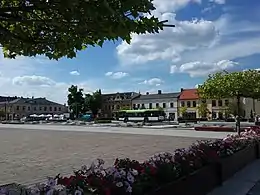 Plac Kościuszki, main square of Tomaszów Mazowiecki | |
 Flag | |
 Tomaszów Mazowiecki 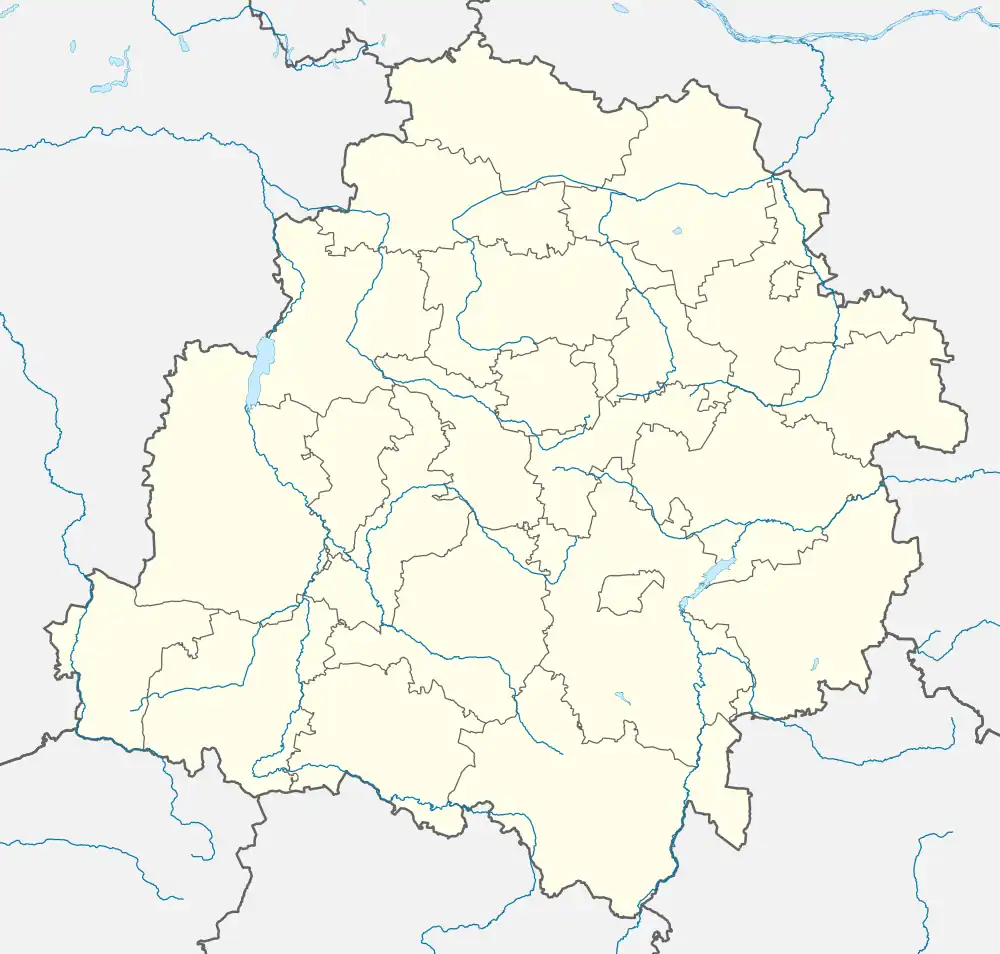 Tomaszów Mazowiecki | |
| Coordinates: 51°31′N 20°1′E / 51.517°N 20.017°E | |
| Country | |
| Voivodeship | Łódź |
| County | Tomaszów Mazowiecki County |
| Gmina | Tomaszów Mazowiecki (urban gmina) |
| Established | 18th century[1] |
| City rights | 1830 |
| Government | |
| • City mayor | Marcin Witko (PiS) |
| Area | |
| • Total | 41.3 km2 (15.9 sq mi) |
| Population (31 December 2021) | |
| • Total | 60,529 |
| Time zone | UTC+1 (CET) |
| • Summer (DST) | UTC+2 (CEST) |
| Postal code | 97-200 |
| Area code | +48 44 |
| Car plates | ETM |
| Climate | Dfb |
| Highways | |
| National roads | |
| Voivodeship roads | |
| Website | http://www.tomaszow-maz.eu |
Tomaszów Mazowiecki (pronounced [tɔˈmaʂuf mazɔˈvjɛt͡skʲi] ⓘ, Yiddish: טאָמעשעוו or Tomashuv) is a city in central Poland with 60,529 inhabitants (2021).[2] The fourth most populous city in the Łódź Voivodeship and the second with free public transport. It is the seat of Tomaszów County. In Tomaszów Mazowiecki there is the first (and the only) all-year speed skating track in Poland - Ice Arena Tomaszów Mazowiecki, which has hosted the World Championships.[3][4] In autumn, the city hosts the international Love Polish Jazz festival, organized by the Polish Ministry of Culture and National Heritage.[5]
Location
Tomaszów is situated in the Łódź Voivodeship (since 1999); previously, it was part of Piotrków Voivodeship (1975–1998). Tomaszów occupies an area of 41.3 square kilometres (15.9 sq mi) as of 2002. The town is situated on the banks of three rivers, the Pilica, Wolbórka, and Czarna Bielina, and is near the Sulejow Reservoir and the edge of the Puszcza Spalska wilderness area.
History
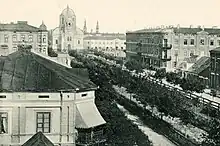
Tomaszów Mazowiecki was formed in 1788 in the Crown of the Kingdom of Poland by owner these lands – Tomasz Ostrowski based on local supply of the iron ore. Ostrowski invited the first miners and metallurgists from the Old-Polish Industrial Region.[8][9] The settlement fell into the Prussian Partition in 1793 during the Second Partition of Poland. In 1807 it was regained by Poles and included within the short-lived Duchy of Warsaw, and since 1815 it was located in the Russian Partition. The metal industry was expanded around 1820. Tomaszów received city rights in 1830 during the Polish November Uprising against the Russian Empire. The first weavers came to Tomaszów from Zgorzelec. The first Lutheran church was established in 1823.[10] In 1825, Antoni Ostrowski transferred from the village of Tobiasze to Tomaszów a Catholic parish with the church of St. Wenceslas – Duke of Bohemia, which was located at Wieczność St., in the area of the first Catholic cemetery (nowadays Słowackiego St).[11][12] In 1831 Qahal was founded.[13] During the January Uprising, on July 12 and September 1, 1863, clashes between Polish insurgents and Russian soldiers took place.[14] From 1867, it was administratively located in the Piotrków Governorate.
During World War I, Tomaszów was occupied by Germany, which policies led to poverty and hunger among the population.[15] During the war, local Poles organized secret resistance in the town, including the Polish Military Organisation.[16] After the war, on November 11, 1918, Poland regained independence, and the Poles disarmed German troops, who afterwards left the town. In mid-November 1918, the town's first Polish military unit was organized.[17] Within interwar Poland, the Polish Army was stationed in the town, and it administratively belonged to the Łódź Voivodeship. By 1931 the Jewish population of the city grew to 11,310 inhabitants, or about 30% of the general population of Tomaszów.[13]
World War II
_CC0.jpg.webp)
On September 1, 1939, the first day of the German-Soviet invasion of Poland that started World War II, the Germans air raided the town twice, killing seven people.[18] Further air raids were carried out in the following days, forcing many inhabitants to flee.[18] The Germans bombed houses, factories and fire engines.[18] On September 6, the Battle of Tomaszów Mazowiecki was fought between Poland and Germany. On September 7, the Germans entered the town and the Einsatzgruppe III arrived to commit various atrocities against the populace.[19] The Germans then looted the town, burned houses, and committed some murders of its inhabitants.[18] On September 26, the Germans founded a local branch of the Arbeitsamt, which sent local Poles to forced labour.[20] The Great Synagogue was burned to the ground as first on 16 October 1939; the remaining two synagogues were destroyed on 7–14 November.[13]
Before the Polish Independence Day (November 11), in 1939, the German police carried out mass arrests of about 300 Poles, including priests, teachers, doctors, judges, workers and activists.[21] Most were released after November 11, but some, including the pre-war mayor, were imprisoned in Piotrków Trybunalski.[21] Further mass arrests of Poles were carried out in January, June and August 1940.[22] On 12–13 June, the Germans arrested 280 people, while on 12–13 August they arrested many women.[23] The victims were then interrogated by the Gestapo, and most were afterwards deported to the Sachsenhausen, Ravensbrück and Buchenwald concentration camps, while some were murdered on the spot.[24] A ghetto for the imprisonment of 16,500 Polish Jews was created in December 1940 and closed off from the outside in December 1941. Hunger was rampant, followed by the typhus epidemic. In December 1942, 15,000 Jews were deported aboard Holocaust trains to the Treblinka extermination camp. Some 200 Jews from Tomaszów are known to have survived World War II.[13] The Germans carried out further executions of Poles, among which was priest Wojciech Dionizy Bryndza-Nacki,[25] and also established and operated a Nazi prison,[26] and a Baudienst forced labour camp for young Poles in the town.[27] In 1944, even 12-year-old Polish children were used as slave labourers to build fortifications in the area in preparation for the advancing Eastern Front.[28] In 1944, during and following the Warsaw Uprising, the Germans deported thousands of Varsovians from the Dulag 121 camp in Pruszków, where they were initially imprisoned, to Tomaszów Mazowiecki.[29] Those Poles were mainly old people, ill people and women with children.[29] 30,000 Poles expelled from Warsaw stayed in the town and nearby settlements, as of 1 November 1944.[29]
Geography

According to 2006 data, Tomaszów has an area of 41.3 square kilometres (15.9 sq mi); about 45 percent of the land is put to agricultural use, 13% is forested, and the city itself covers about 4.03% of the area.
In the valley of the Pilica river in the south-eastern part of the town, there is a unique natural karst spring of water containing calcium salts, that is an object of protection in Niebieskie Źródła Nature Reserve in Sulejów Landscape Park. The origin of the name of the reserve Niebieskie Źródła, which means Blue Springs, comes from the fact that red waves are absorbed by water and only blue and green are reflected from the bottom of the spring, giving that atypical colour.[30] The reserve is situated near the end of Saint Anthony Street (in Polish: ulica świętego Antoniego) that begins in the centre of Tomaszów Mazowiecki, in proximity to the central Kościuszko Square.
Climate
Tomaszów Mazowiecki has a humid continental climate (Cfb in the Köppen climate classification).
| Climate data for Tomaszów Mazowiecki | |||||||||||||
|---|---|---|---|---|---|---|---|---|---|---|---|---|---|
| Month | Jan | Feb | Mar | Apr | May | Jun | Jul | Aug | Sep | Oct | Nov | Dec | Year |
| Mean daily maximum °C (°F) | 0.3 (32.5) |
2.1 (35.8) |
7.1 (44.8) |
13.8 (56.8) |
18.7 (65.7) |
22.0 (71.6) |
24.0 (75.2) |
23.7 (74.7) |
18.8 (65.8) |
12.8 (55.0) |
7.3 (45.1) |
2.5 (36.5) |
12.8 (55.0) |
| Daily mean °C (°F) | −2.0 (28.4) |
−0.9 (30.4) |
3.1 (37.6) |
9.1 (48.4) |
14.2 (57.6) |
17.7 (63.9) |
19.7 (67.5) |
19.3 (66.7) |
14.5 (58.1) |
9.3 (48.7) |
4.7 (40.5) |
0.4 (32.7) |
9.1 (48.4) |
| Mean daily minimum °C (°F) | −4.5 (23.9) |
−4.0 (24.8) |
−1.0 (30.2) |
3.8 (38.8) |
9.0 (48.2) |
12.6 (54.7) |
15.0 (59.0) |
14.5 (58.1) |
10.4 (50.7) |
6.0 (42.8) |
2.2 (36.0) |
−1.8 (28.8) |
5.2 (41.3) |
| Average precipitation mm (inches) | 45 (1.8) |
41 (1.6) |
49 (1.9) |
50 (2.0) |
73 (2.9) |
69 (2.7) |
92 (3.6) |
64 (2.5) |
61 (2.4) |
47 (1.9) |
45 (1.8) |
46 (1.8) |
682 (26.9) |
| Source: https://en.climate-data.org/europe/poland/łodz-voivodeship/tomaszow-mazowiecki-10350/ | |||||||||||||
Economy
_Weaving_wool_mills_in_the_%C5%81%C3%B3d%C5%BA_industrial_region_and_in_Tomasz%C3%B3w_in_1869.png.webp)
Since the mid-19th century to the 1990s, a large center of the textile industry. The second, after Łódź, center of clothing wool production in the Congress Poland and nineteenth-century Russia. In the 20th century – thanks to Tomaszów's Artificial Silk Factory – one of the largest European centers for the production of fibers and plastics. Nowadays, Tomaszów Mazowiecki incorporates the Łódź Special Economic Zone, which is one of the 14 special economic zones in Poland.[31] The city is home to a variety of industries: ceramics, construction, chemicals, plastics producers, electrical machinery manufacturers, upholstery, food, logistics and service.
Materials Industry

The major minerals companies in the area are Ceramika Paradyż a manufacturer of ceramic tiles[32] and Sacmi which specialises in ceramic tile production machines.[33] The Wagran factory (built on the area of the former Artificial Silk Company of Tomaszów), is a producer of granite sinks[34]
Construction Sector
Within the construction sector Balex Metal produces high quality steel construction components.[35] Ezbud-Budownictwo focuses on the construction of residential and service premises, sales and management of constructed properties[36] and also produces ready-mixed concrete and other building materials. The company has been engaged in the construction of several housing estates in Tomaszów and Łódź from 1989 onwards and since 2019 has been the main sponsor of Tomaszów's largest football club - "Lechia 1923".[37]
Chemical Industry
_na_terenie_dawnego_Wistomu%252C_CCO.jpg.webp)
Major chemical companies in Tomaszów include Sicher Bautechnik which is a producer of construction chemicals,[38] EcoHydroCarbon which specializes in polymer waste processing[39] and Toma a plastics processing company[40] that also operates a private clinic at its plant for employees to use.
Equipment Manufacturers
The region has several specialist equipment manufacturers that include Markom, a producer of welding and transport equipment, and Glass Product, which manufactures automatic fertilization and raw material transport systems.[41]
Carpets and upholstery industry
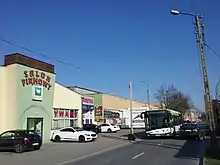
The Japanese car manufacturer Toyota has a base in Tomaszów, specializing in the production of upholstery for its range of premium vehicles.[42] Weltom, a producer or carpets and rugs, also has a base in the city. The company was founded by Eleonora and Jan Roland. Their son, Edward Roland, began the business in 1848 from a small workshop consisting of a spinning mill and a weaving mill operated by three people. The workshop was located on Kaliska Street (today Piłsudskiego). In 1905, the company had expanded to employ a hundred and thirty weavers. The company quickly made a name for itself and became known throughout the Russian Empire. After World War II, the company was nationalized and renamed the "Weltom". In the 1990s, the plant underwent a transformation into a joint-stock company. Today, in addition to carpets, the company produces upholstery and coconut wipers. The entire western district of the city (Rolandówka) has been named after the company's founders.[43][44]
Food Industry
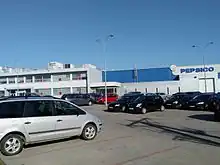
Within Tomaszów's food and beverage sector PepsiCo produces the famous Cheetos crisps,[45] Chipita produces croissants[46] and Roldrob (Drosed) produces poultry products[47] for customers such as KFC. Additionally, Las Vegas is a producer of energy drinks where the group also own the "Bulwary" shopping center in the city.
Logistics and Services Sector
Other companies in the region specializing in logistics and services are FM Logistic, serving Carrefour and Makro Cash and Carry,[48] and Syntom, a recycling company.[49]
Sport
The town's most notable sport clubs are Lechia Tomaszów Mazowiecki with football and volleyball sections and Pilica Tomaszów Mazowiecki with speed skating and bowling sections.
The sports venue Ice Arena Tomaszów Mazowiecki hosts main international speed skating competitions; including ISU Speed Skating World Cups. It is also an ice hockey venue.
Education
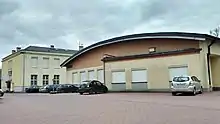
There are seven high schools in Tomaszów Mazowiecki as well as branches of notable universities including:
- Branch of University of Łódź
- Branch of Pułaski University of Technology and Humanities in Radom (pl)
- Branch of Wyższa Szkoła Biznesu i Przedsiębiorczości in Ostrowiec (pl)
Points of interest
In the city there is first in Poland year-round ice skating rink that serves for speed skating, figure skating, ice hockey, short track and roller skating. It is located near Pilica River.[50]
During the occupation of Poland in World War II, several strategic bunkers were built by Nazi Germany near Tomaszów Mazowiecki. The construction of the two large air-raid shelters was started in early 1940. The so-called Konewka Bunkers (now a tourist attraction) were a complex of various concrete structures hidden in the woods, including an enormous 380 metres (1,250 ft) long bunker capable of protecting an entire trainset from the possible air raid. The shelters in Konewka and in Jeleń, built of reinforced concrete, served as unloading stations for military cargo.[51]
Sulejowski Reservoir

The Sulejow Lake is a large reservoir built from 1969–1973 in order to help meet the demand for fresh drinking water in the city of Łódź and the city of Tomaszów Mazowiecki. The reservoir is situated on the territory of three gminas: Tomaszów, Piotrków and Wolbórz. It is a popular place for water sports, including windsurfing, canoeing and sailing.
Grottoes in Nagórzyce (district of Tomaszów)

In the south of the town there is an eighteenth-century quartz sand mine - The Nagórzyckie Grottoes (Polish: Groty Nagórzyckie). Today, an underground tourist route. At the entrance there is a pavilion with ticket desk, food vending machines and public toilets. They can be reached from the town center by a city bus or by an illuminated bicycle path.[52][53][54][55]
Transport
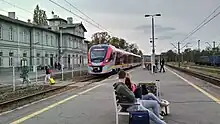
Public transportation by buses was established in 1929. Since 2018, public transport in the city is free of charge.
Directly by train from Tomaszów it is possible to travel to: Kraków, Łodź, Poznań, Gdynia, Szczecin.
Several national and regional routes cross each other in the city:
International relations
Twin towns — Sister cities
Tomaszów Mazowiecki is twinned with:
 Mionica, Serbia
Mionica, Serbia Prato, Italy
Prato, Italy Ivano-Frankivsk, Ukraine[56]
Ivano-Frankivsk, Ukraine[56] Linares, Spain
Linares, Spain Polonezköy, Turkey
Polonezköy, Turkey
Polish Armed Forces
The 25th Air Cavalry Brigade is deployed in Tomaszów Mazowiecki. Headquarters there are in the town and main barracks. Garnison Polish Armed Forces in Tomaszów Mazowiecki has existed since 1918. At the north-eastern border of the town, by Expressway S8 there is the Brigade airport (Tomaszów Mazowiecki Airport).[57][58][59][60]
Notable people
- Karolina Bosiek (born 2000), Polish speed skater
- Maria Ciach (1933–2008), Polish javelin thrower
- Tadeusz Chmielewski (1927–2016), Polish film director, screenwriter and film producer
- Moshe Dluznowsky (1903–1977), Polish-born Jewish-American journalist, publicist, writer
- Mirosława Jastrzębska (1921–1982), curator of the Regional Museum in Tomaszów Mazowiecki
- Heidi Knake-Werner (born 1943), German politician (Die Linke)
- Izabela Kuna (born 1970), Polish actress
- Oskar Lange (1904–1965), Polish economist
- Bogusław Mec (born 1947), Polish singer
- Bolesław Mołojec (1909–1942), Polish communist activist, prominent commander in The International Brigades during War in Spain
- Wanda Panfil-González (born 1959), Polish long-distance runner
- Jaromir Radke (born 1969), Polish speed skater
- Michael Sela (1924–2022), Israeli immunologist; President of the Weizmann Institute of Science
Gallery
%252C_over_Ujezdzka_Street_in_Tomasz%C3%B3w_Mazowiecki_(%C5%81%C3%B3d%C5%BA_Voivodeship)%252C_Poland%252C_EU.png.webp) The expressway S8 (Białystok – Warsaw - Wrocław / Katowice), over Ujezdzka Street in Tomaszów Mazowiecki
The expressway S8 (Białystok – Warsaw - Wrocław / Katowice), over Ujezdzka Street in Tomaszów Mazowiecki The oldest secondary school (AD 1903) Listed in the rank of the top 500 schools in Poland
The oldest secondary school (AD 1903) Listed in the rank of the top 500 schools in Poland The largest shopping center- "Galeria Tomaszów", former textile factory
The largest shopping center- "Galeria Tomaszów", former textile factory The largest shopping center on the Wolbórka river - "Galeria Tomaszów"
The largest shopping center on the Wolbórka river - "Galeria Tomaszów" Police station
Police station Main square by night
Main square by night Parish church of St Anthony
Parish church of St Anthony The Ostrowski Palace, built in 1812. Now, regional museum.
The Ostrowski Palace, built in 1812. Now, regional museum. The Knothe Family house. Now, children's library
The Knothe Family house. Now, children's library.jpg.webp) Pilica River in Tomaszów
Pilica River in Tomaszów Evangelical-Augsburg Church
Evangelical-Augsburg Church 100 meters high television mast in the telecommunications complex in the city center
100 meters high television mast in the telecommunications complex in the city center Complex of special schools
Complex of special schools One of stadiums of city football club "Lechia 1923"
One of stadiums of city football club "Lechia 1923" Electric kick scooters on the street
Electric kick scooters on the street- Residents of Tomaszów on the main square of the town (end of December 2022)
References
- ↑ "Encyclopædia Britannica". www.britannica.com. Retrieved 2022-12-04.
- 1 2 "Local Data Bank". Statistics Poland. Retrieved 17 August 2022. Data for territorial unit 1016011.
- ↑ "Canadian Long Track Skaters in Poland for Third World Cup of the Season | Speed Skating Canada". www.speedskating.ca. Retrieved 2021-09-01.
- ↑ "Eisschnelllauf in Polen: 500m Männer". www.zdf.de (in German). Retrieved 2021-09-01.
- ↑ "Love Polish Jazz Festival". lovepolishjazzfestival.pl (in Polish). Retrieved 2021-09-01.
- ↑ Cynalewska-Kuczma, Paulina (2004). Architektura cerkiewna Królestwa Polskiego narzędziem integracji z Imperium Rosyjskim [Orthodox Church architecture of the Congress Poland as a tool of integration with the Russian Empire] (in Polish). Wydawn. Naukowe UAM. ISBN 978-83-232-1463-2.
- ↑ "Cerkiew stała kiedyś na środku pl. Kościuszki w Tomaszowie Maz. – ZDJĘCIA" [The Orthodox Church used to stand in the center of the Kosciuszko Square in Tomaszow Maz – PHOTOS]. Tomaszów Mazowiecki Nasze Miasto (in Polish). Polska Press Group. 2021-03-07. Retrieved 2022-12-08.
- ↑ Ostrowski, Antoni (1980). Wspomnienie o życiu Tomasza z Rawitow hr. Ostrowskiego, prezesa seantatu KP. Warsaw: Archiwum Główne Akt Dawnych – Archiwum Ostrowskich z Ujazdu. pp. 39–40. ISBN 9788301011888.
- ↑ Seweryn, Tadeusz (1927). Historia powstania i rozwoju miasta Tomaszowa Mazowieckiego 1789–1900. Echo Mazowieckie. pp. 7–32.
- ↑ Rudź, Włodzimierz (1980). Wytwórczość górniczo–hutnicza w Tomaszowie Mazowieckim. Warszawa: Państwowe Wydawnictwo Naukowe. p. 77. ISBN 9788301011888.
- ↑ Seweryn, Tadeusz (1995). Słownik geograficzny Królestwa Polskiego i innych krajów słowiańskich. p. 12. ISBN 83-85490-09-4.
- ↑ Redakcja (2013-10-16). "Tomaszów wczoraj i dziś: Kościół św. Wacława [STARE ZDJĘCIA]". Tomaszów Mazowiecki Nasze Miasto (in Polish). Retrieved 2020-07-09.
- 1 2 3 4 Fronczkowski M. (2015). "History of Tomaszów Mazowiecki". "Tomaszowscy Żydzi", Towarzystwo Przyjaciół Tomaszowa Mazowieckiego. Muzeum Historii Żydów Polskich POLIN. Retrieved 19 April 2015.
- ↑ Zieliński, Stanisław (1913). Bitwy i potyczki 1863-1864. Na podstawie materyałów drukowanych i rękopiśmiennych Muzeum Narodowego w Rapperswilu (in Polish). Rapperswil: Fundusz Wydawniczy Muzeum Narodowego w Rapperswilu. pp. 37, 43.
- ↑ Jarno, Witold (2015). "Zarys wojskowych dziejów Tomaszowa Mazowieckiego w latach II Rzeczypospolitej". Przegląd Nauk Historycznych (in Polish) (2): 147.
- ↑ Jarno, p. 148
- ↑ Jarno, p. 152
- 1 2 3 4 Joanna Dębiec (3 September 2011). "Pierwsze dni II wojny światowej w Tomaszowie". Tomaszów Mazowiecki Nasze Miasto (in Polish). Retrieved 14 February 2021.
- ↑ Wardzyńska, Maria (2009). Był rok 1939. Operacja niemieckiej policji bezpieczeństwa w Polsce. Intelligenzaktion (in Polish). Warszawa: IPN. pp. 56–57.
- ↑ Góral, Jan (2002). "Roboty przymusowe w Piotrkowskiem w latach okupacji hitlerowskiej". Piotrkowskie Zeszyty Historyczne (in Polish) (4): 146.
- 1 2 Wardzyńska, p. 250
- ↑ Wardzyńska, p. 251, 266
- ↑ Wardzyńska, p. 266
- ↑ Wardzyńska, p. 266-267
- ↑ "Wojciech Dionizy Bryndza-Nacki" (in Polish). Retrieved 14 February 2021.
- ↑ "Schweres NS-Gefängnis Tomaszów Mazowiecki 02". Bundesarchiv.de (in German). Retrieved 14 February 2021.
- ↑ Góral, p. 148
- ↑ Góral, p. 158
- 1 2 3 "Transporty z obozu Dulag 121". Muzeum Dulag 121 (in Polish). Retrieved 8 May 2021.
- ↑ "Blue Springs of Tomaszow Mazowiecki, Tomaszów Mazowiecki, Poland Tourist Information". Touristlink.com. Retrieved 2022-03-19.
- ↑ "PAIH | Łódź Special Economic Zone". www.paih.gov.pl (in Polish). Retrieved 2019-06-07.
- ↑ "Polska jest trzecim producentem płytek ceramicznych w UE". www.rp.pl (in Polish). Retrieved 2019-06-07.
- ↑ "Polonia: Sacmi apre una nuova sede a Tomaszow | WSI". Wall Street Italia (in Italian). 2006-11-01. Retrieved 2019-06-07.
- ↑ Obszarny, Marek (2010-12-10). "W Tomaszowie rusza nowa fabryka". tomaszowmazowiecki.naszemiasto.pl (in Polish). Retrieved 2019-06-07.
- ↑ "Lista 200 Największych Polskich Firm 2021 - Wprost". Rankingi.wprost.pl. 2021-05-14. Retrieved 2022-03-19.
- ↑ "Description of the investment « Zakładowa 87" (in Polish). Retrieved 2019-06-07.
- ↑ "Historia | Ezbud.pl". ezbud.pl. Retrieved 2019-06-07.
- ↑ "SICHER BAUTECHNIK Sp. Z o.o., profil firmy - Gazele Biznesu 2021".
- ↑ "O firmie | EcoHydroCarbon". May 2013. Retrieved 2019-06-07.
- ↑ "Toma – Przetwórstwo tworzyw sztucznych – Tomaszów Mazowiecki". www.pphtoma.pl (in Polish). Retrieved 2019-06-07.
- ↑ "Glass-Produkt". www.glass-produkt.com.pl. Retrieved 2019-06-07.
- ↑ "TIT - Tomaszowski Informator Tygodniowy - przegląd artykułu". tomaszow-tit.pl. Retrieved 2019-06-07.
- ↑ Dębiec, Joanna (2012-07-15). "Stare dzieje tomaszowskiej Rolandówki. Urocza dzielnica słynąca z wyrobu dywanów". tomaszowmazowiecki.naszemiasto.pl (in Polish). Retrieved 2019-06-07.
- ↑ "Dywany Weltom - o firmie". www.weltom.pl. Retrieved 2019-06-07.
- ↑ "PepsiCo.com". www.pepsicopoland.com. Retrieved 2019-06-07.
- ↑ "Home". www.chipita.com. Retrieved 2019-06-07.
- ↑ "Roldrob S.A. – Grupa Drosed – polskie produkty" (in Polish). Retrieved 2019-06-07.
- ↑ "FM Logistic rozbuduje centrum w Tomaszowie Mazowieckim". www.dlahandlu.pl (in Polish). Retrieved 2019-06-07.
- ↑ "Syntom Metal Recycling Sp. z o.o. - Skup złomu, złom, surowce wtórne". www.syntom.pl. Retrieved 2019-06-07.
- ↑ "New USD 13 million speed skating arena opens in Poland".
- ↑ PPHU IMAX (2017). "Bunker in Konewka. Tourist Route - Poland". Lodz.
- ↑ "poland.Nagorzyce Grottos". www.poland.travel. Retrieved 2021-08-31.
- ↑ "Nagórzyckie Caves - Tomaszów Mazowiecki | Lodz tourpoland.net - tourist Poland". lodz.tourpoland.net. Retrieved 2021-08-31.
- ↑ "Nagorzyckie Grotto (Tomaszow Mazowiecki) - 2021 All You Need to Know BEFORE You Go (with Photos)". Tripadvisor. Retrieved 2021-08-31.
- ↑ Economic aspects of creating silvaturist products on the exam-ple of the Smardzewice Forest District (PDF). Wydział Leśny SGGW w Warszawie.
- ↑ "Офіційний сайт міста Івано-Франківська" (in Ukrainian). mvk.if.ua. Retrieved 7 March 2010.
- ↑ "25 Brygada Kawalerii Powietrznej". www.wojsko-polskie.pl (in Polish). Retrieved 2022-12-06.
- ↑ "THE POLISH MILITARY CONTINGENT ON THE FIELD". jfcnaples.nato.int. Retrieved 2022-12-07.
- ↑ S.A, Telewizja Polska. "Polish soldiers ready for peacekeeping mission in Kosovo". tvpworld.com. Retrieved 2022-12-07.
- ↑ "Wojskowe w lotniska w Polsce" [Military Airports Poland] (PDF). Polish Air Navigation Services Agency. Dec 2, 2021. Retrieved Dec 7, 2022.
{{cite web}}: CS1 maint: date and year (link)

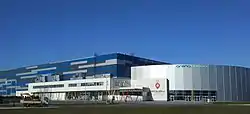
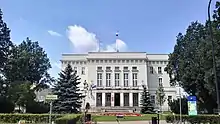


_COA.svg.png.webp)